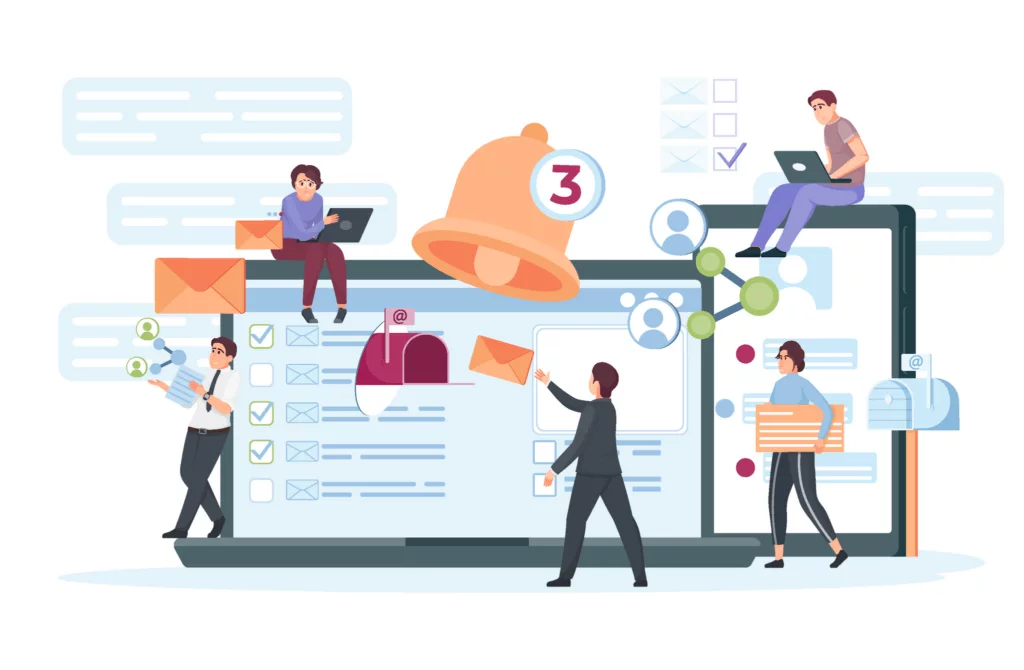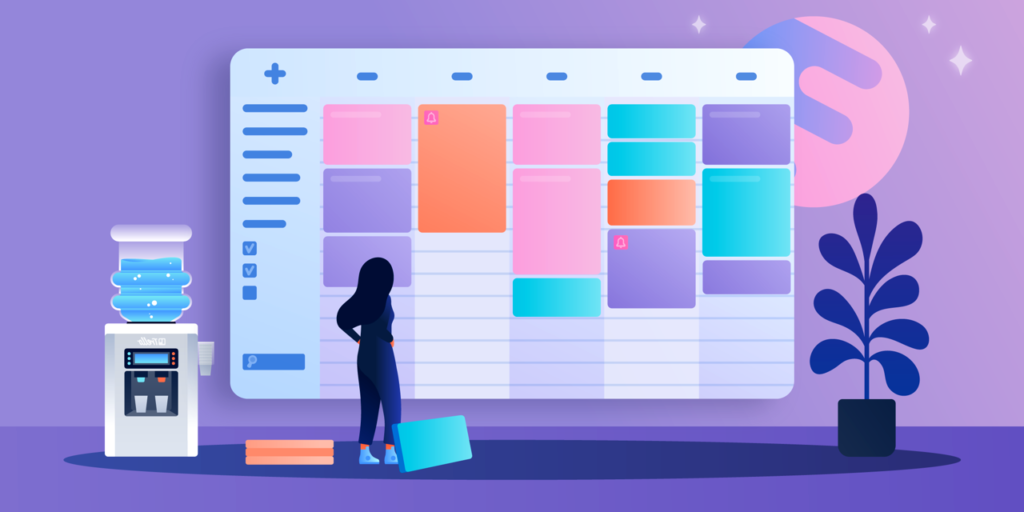In today’s digital age, email marketing remains a powerful tool for businesses to connect with their target audience. When it comes to business-to-business (B2B) marketing, email continues to be a reliable and cost-effective means of communication. This article will provide you with valuable strategies, tips, and examples to help you optimize your B2B email marketing campaigns and achieve your business goals.
Read More: How Marketers Can Pave The Way to Technology Adoption
Contents
- 1 Understanding B2B Email Marketing
- 2 Building an Effective B2B Email List
- 3 Crafting Compelling Email Subject Lines
- 4 Personalization and Segmentation
- 5 Designing Engaging B2B Email Templates
- 6 Incorporating Clear and Actionable Call-to-Actions (CTAs)
- 7 Nurturing Leads with Drip Campaigns
- 8 Analyzing Email Campaign Performance
- 9 Testing and Optimizing Your B2B Email Campaigns
- 10 Leveraging Automation for B2B Email Marketing
- 11 Avoiding Common B2B Email Marketing Mistakes
- 12 B2B Email Marketing Success Stories
- 13 FAQ’s
- 14 Conclusion
Understanding B2B Email Marketing
B2B email marketing involves using email as a means of reaching out to businesses, building relationships, and promoting products or services. It focuses on targeting decision-makers and key stakeholders within organizations. B2B email marketing can be highly effective when executed strategically, offering a personalized and direct channel of communication.
Building an Effective B2B Email List

The foundation of successful B2B email marketing lies in having a quality email list. To build an effective list, consider the following:
- Identify your target audience and buyer personas.
- Leverage your website and landing pages to capture email addresses.
- Offer valuable content such as ebooks or whitepapers in exchange for email sign-ups.
- Participate in industry events and collect email addresses from interested prospects.
- Regularly update and clean your email list to maintain high deliverability rates.
Crafting Compelling Email Subject Lines
The subject line is crucial in grabbing the recipient’s attention and encouraging them to open your email. Here are some tips for crafting compelling subject lines:
- Keep it concise and attention-grabbing.
- Personalize the subject line whenever possible.
- Use action-oriented language to evoke curiosity.
- Test different subject lines to determine what resonates best with your audience.
- Avoid using spam trigger words or excessive punctuation.
Personalization and Segmentation
Personalization and segmentation play a vital role in B2B email marketing success. By tailoring your emails to specific segments of your audience, you can deliver more relevant content and increase engagement. Consider the following:
- Segment your email list based on demographics, industry, job title, or previous interactions.
- Use dynamic content to personalize emails based on recipient data.
- Address recipients by their names to establish a connection.
- Leverage past purchase history or browsing behaviour to provide targeted recommendations.
Designing Engaging B2B Email Templates
A well-designed email template can significantly impact the success of your B2B email campaigns. Consider the following design tips:
- Keep the design clean and professional.
- Use eye-catching visuals to enhance the email’s appeal.
- Ensure the email is mobile-responsive for optimal viewing on all devices.
- Use consistent branding elements such as logos and color schemes.
- Balance text and visuals to maintain a visually appealing layout.
Incorporating Clear and Actionable Call-to-Actions (CTAs)
Your B2B emails should include clear and actionable call-to-actions (CTAs) to guide recipients toward desired actions. Here are some tips for effective CTAs:
- Use compelling and action-oriented language.
- Make the CTA button visually prominent.
- Clearly state the benefits of taking the desired action.
- Test different CTA placements and designs to optimize conversion rates.
- Use urgency or scarcity tactics to create a sense of importance.
Nurturing Leads with Drip Campaigns
Drip campaigns are a series of automated emails sent to prospects over a specific period. They help nurture leads and guide them through the buyer’s journey. Consider the following when creating drip campaigns:
- Plan the sequence of emails strategically, providing value at each stage.
- Personalize the emails based on recipient behaviour or engagement.
- Incorporate educational content, case studies, or testimonials to build credibility.
- Include CTAs that align with the prospect’s stage in the buying process.
- Monitor engagement metrics to refine and optimize your drip campaigns.
Analyzing Email Campaign Performance
To gauge the effectiveness of your B2B email marketing campaigns, it’s essential to analyze key performance metrics. Consider the following metrics for evaluation:
- Open rates: The percentage of recipients who open your emails.
- Click-through rates (CTRs): The percentage of recipients who click on links within your emails.
- Conversion rates: The percentage of recipients who take the desired action.
- Bounce rates: The percentage of undeliverable emails.
- Unsubscribe rates: The percentage of recipients who unsubscribe from your emails.
Testing and Optimizing Your B2B Email Campaigns

Continuous testing and optimization are crucial for maximizing the performance of your B2B email campaigns. Here are some areas to focus on:
- A/B test subject lines, email content, and CTAs to identify the most effective elements.
- Test different email send times and days to determine optimal engagement.
- Monitor and analyze recipient engagement data to refine your campaigns.
- Keep track of industry trends and best practices to stay ahead of the competition.
- Use data-driven insights to make informed decisions and drive better results.
Leveraging Automation for B2B Email Marketing
Automation can greatly streamline your B2B email marketing efforts. By automating repetitive tasks, you can save time and deliver more timely and relevant messages. Consider the following automation opportunities:
- Welcome emails: Send a series of automated emails to new subscribers to introduce your brand and nurture the relationship.
- Abandoned cart emails: Automatically remind customers about items left in their shopping cart to recover potential sales.
- Follow-up emails: Automate follow-up emails after specific interactions, such as attending a webinar or downloading a resource.
- Re-engagement campaigns: Automatically target inactive subscribers with personalized offers or content to re-engage them.
Avoiding Common B2B Email Marketing Mistakes
While implementing B2B email marketing strategies, it’s important to avoid common mistakes that can hinder your success. Be mindful of the following:
- Overly promotional content: Focus on providing value rather than solely promoting your products or services.
- Neglecting email deliverability: Maintain a clean email list and adhere to best practices to ensure your emails reach the intended recipients’ inboxes.
- Lack of personalization: Tailor your emails to each recipient for a more personalized experience.
- Ignoring email analytics: Regularly monitor and analyze email campaign performance to identify areas for improvement.
- Failing to test and optimize: Continuous testing and optimization are essential for maximizing the effectiveness of your campaigns.
B2B Email Marketing Success Stories
Many businesses have achieved remarkable success through their B2B email marketing efforts. Here are a few inspiring examples:
- Company XYZ increased its lead conversion rate by 35% by implementing personalized email campaigns based on recipient behaviour.
- Company ABC saw a 50% increase in email engagement by using captivating visuals and interactive elements in their B2B email templates.
- Company DEF generated $1 million in sales within six months by implementing a targeted drip campaign tailored to their different buyer personas.
These success stories demonstrate the potential impact of well-executed B2B email marketing strategies.
Read More: 9+ Overriding TikTok Statistics That Every Marketer Should Know
FAQ’s
- How often should I send B2B marketing emails? The frequency of B2B marketing emails depends on your audience and their preferences. Test different sending frequencies to find the optimal balance between staying top-of-mind and avoiding email fatigue.
- Can I use purchased email lists for B2B email marketing? It’s generally not recommended to use purchased email lists as they may result in low engagement and deliverability issues. It’s best to grow your email list organically with interested and engaged prospects.
- What is the ideal length for a B2B marketing email? B2B marketing emails should be concise and to the point. Aim for a length that allows you to convey your message effectively without overwhelming the reader. Testing different email lengths can help determine what resonates best with your audience.
- How can I measure the success of my B2B email campaigns? Key metrics such as open rates, click-through rates, conversion rates, and ROI can help measure the success of your B2B email campaigns. Use analytics tools to track and analyze these metrics regularly.
- What are some effective ways to improve email deliverability? To improve email deliverability, focus on maintaining a clean email list, avoid spam trigger words, personalize your emails, and follow email deliverability best practices. Regularly monitor your email deliverability rates to address any issues promptly.
Conclusion
B2B email marketing is a powerful tool for businesses to connect with their target audience, build relationships, and drive conversions. By following the strategies, tips, and examples provided in this article, you can optimize your B2B email marketing campaigns and achieve your business goals. Remember to continuously test, analyze, and optimize your efforts to stay ahead in the competitive B2B landscape.




